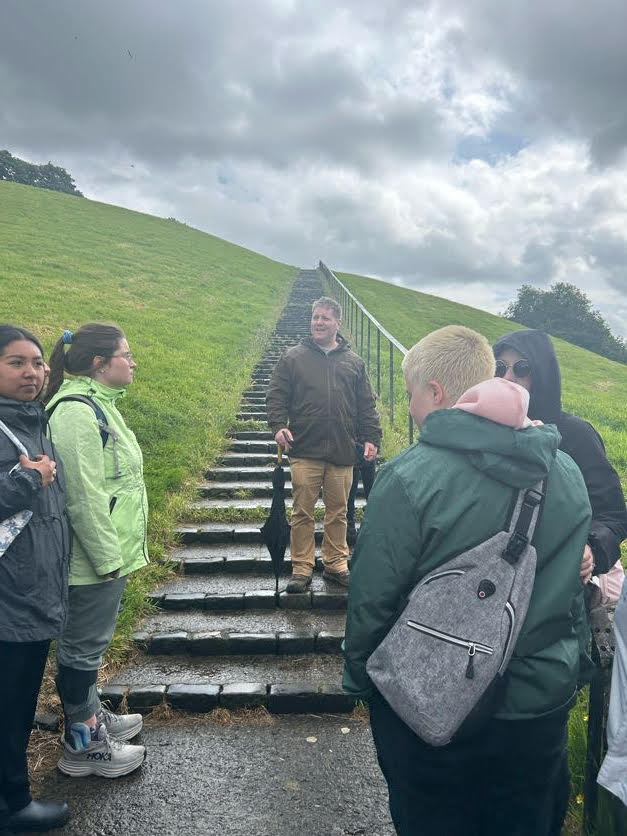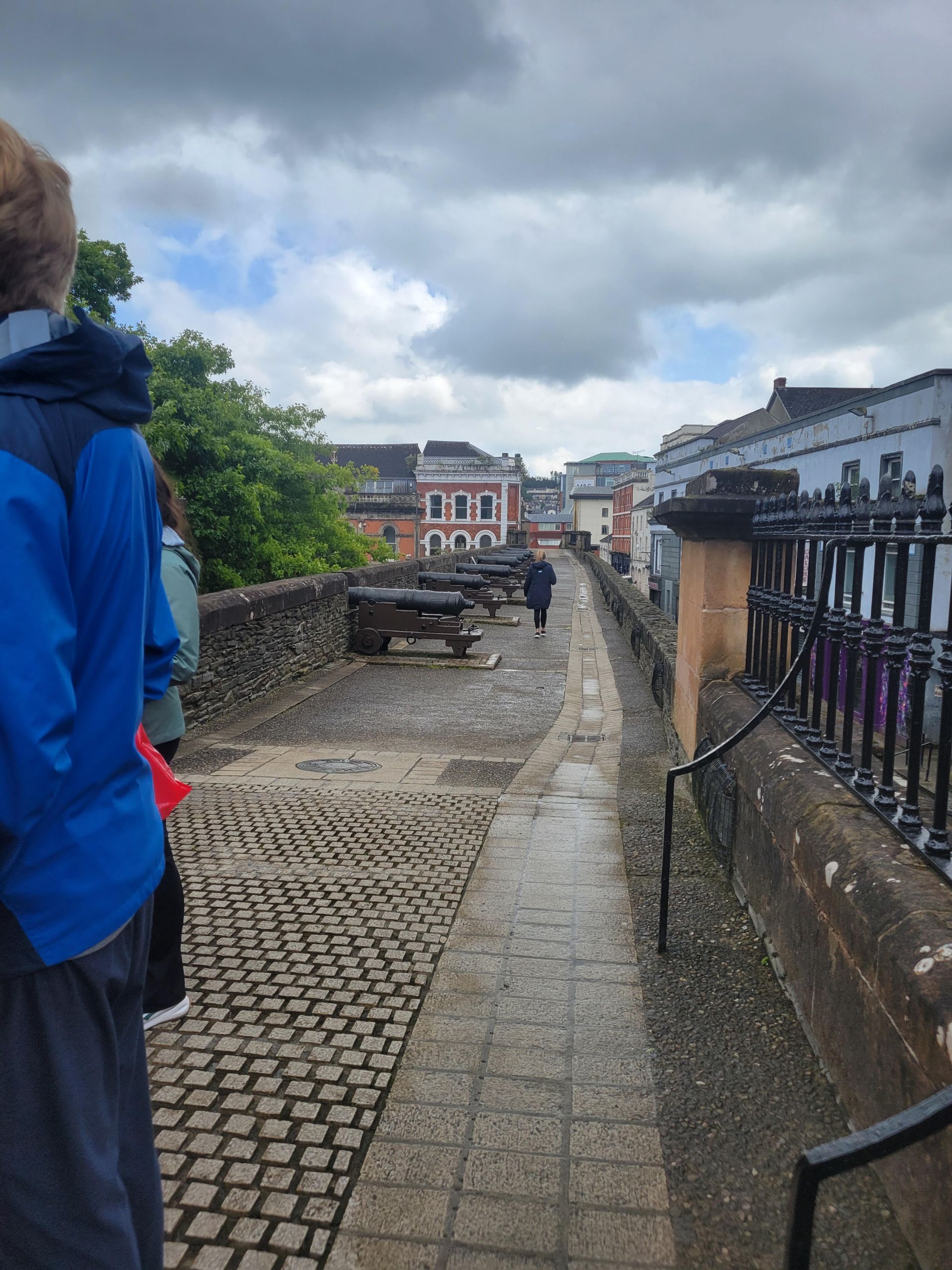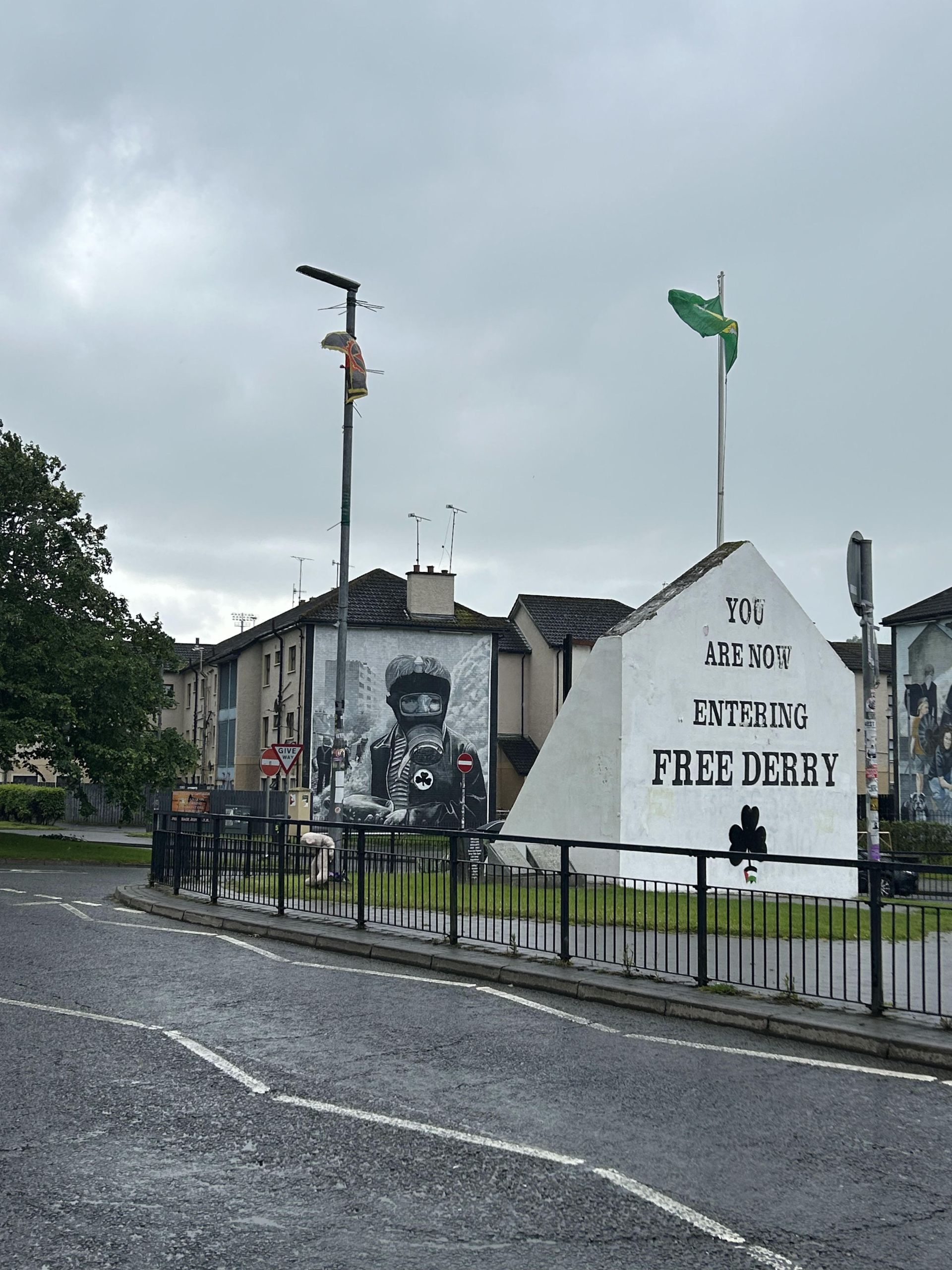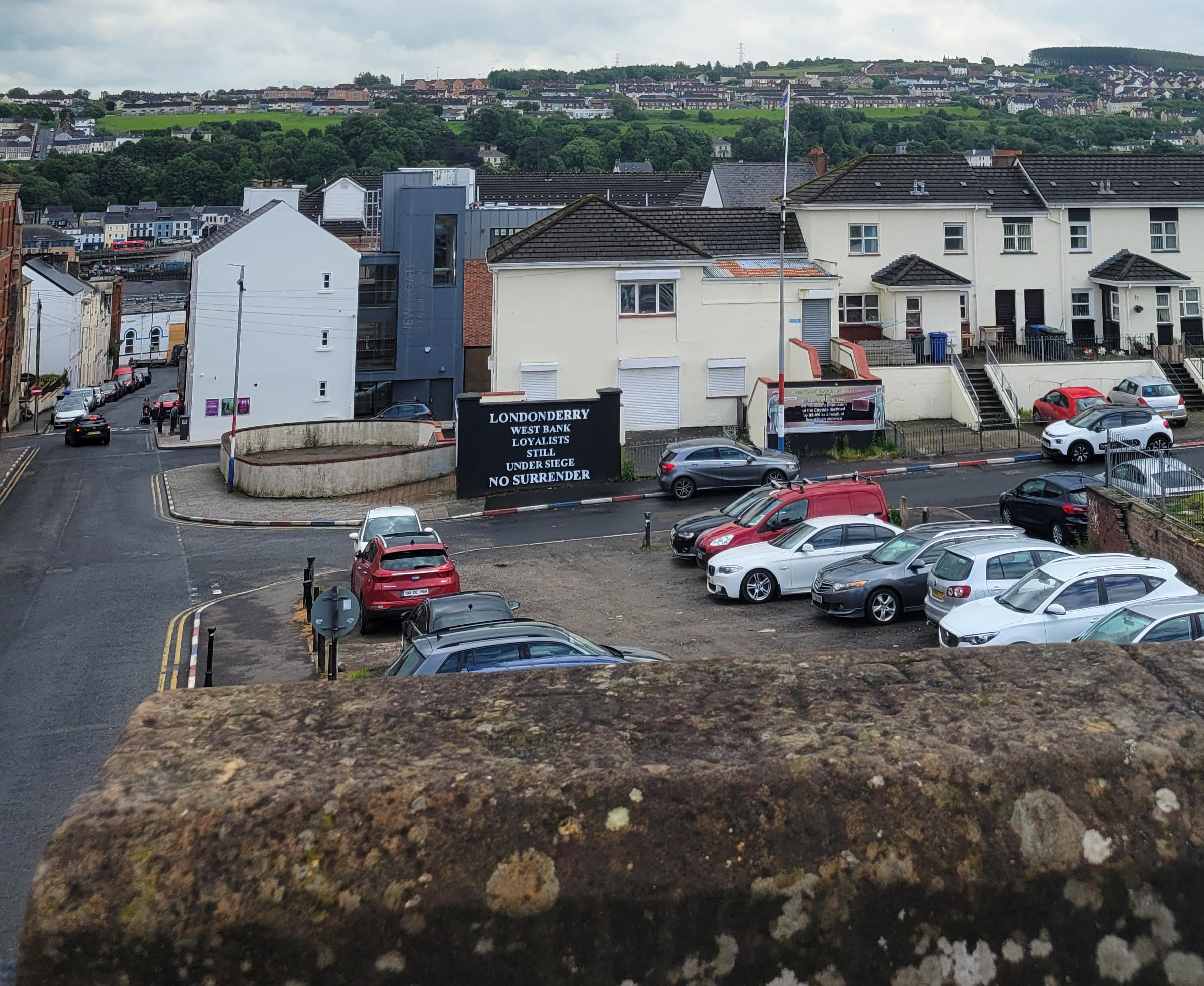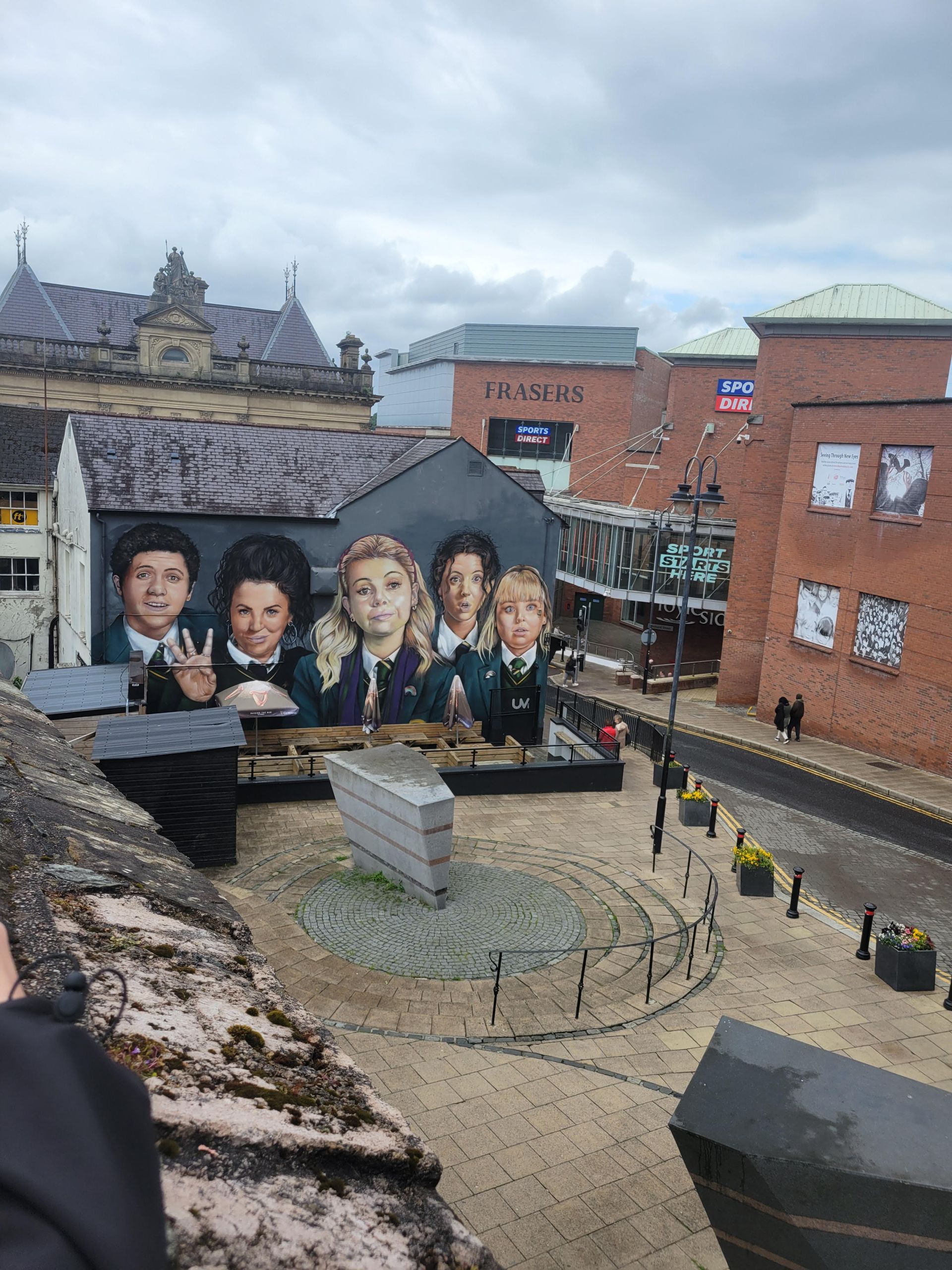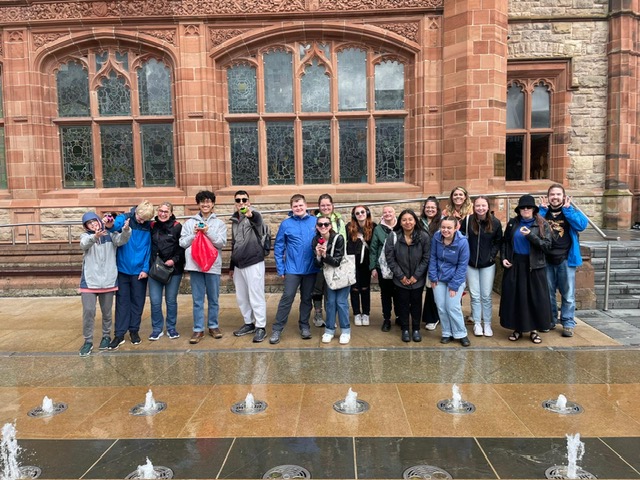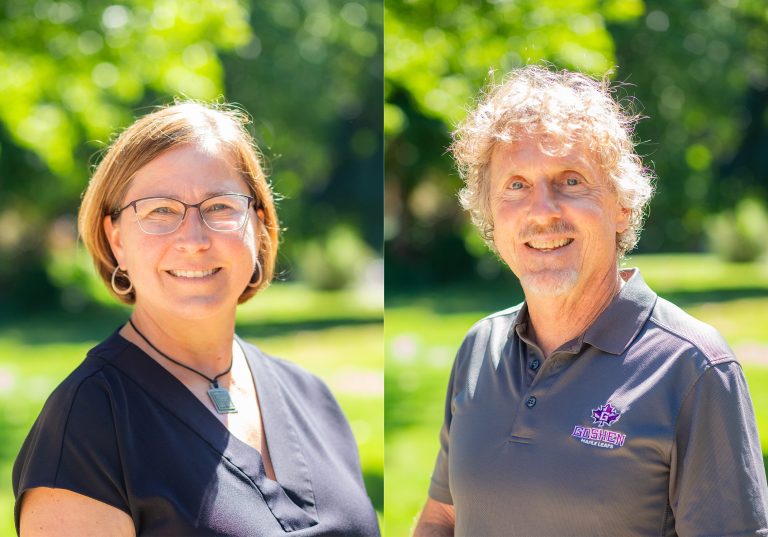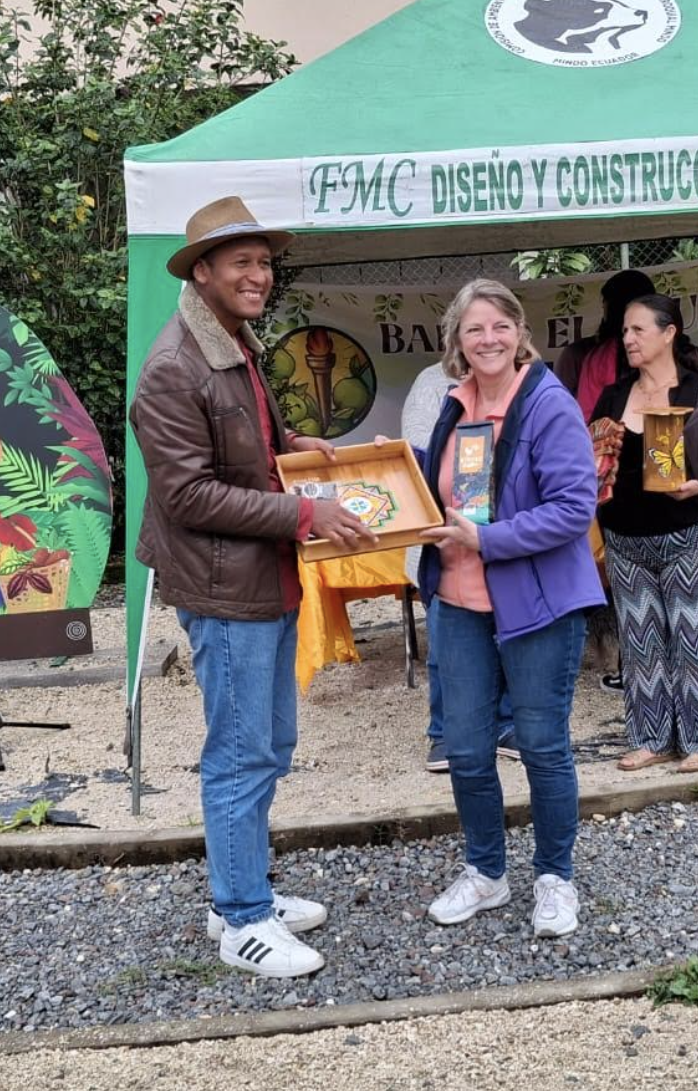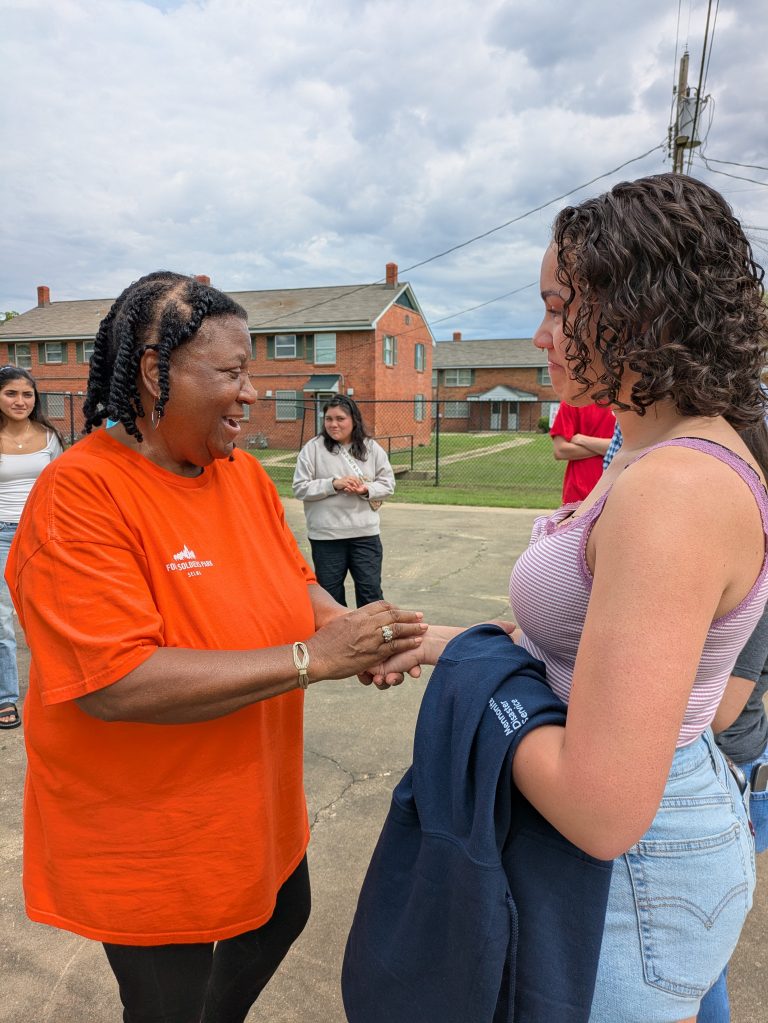Goshen College’s “SST for all” makes global education more accessible with flexible study options at home and abroad.

News
A Visit to Derry/Londonderry
Jun 14 2024
One of our focuses during this course has been the history of Northern Ireland, specifically the Troubles, the particularly intense period of conflict between Catholics and Protestants that took place from 1968 to 1998. Derry was at the center of this conflict, its literal walls—first built in the 17th century—dividing these groups. During our time in Derry on Wednesday June 5, we took a historical tour, led by Ruairi O’hEara of Tours of Derry, of the walls and other monuments important to the conflict.
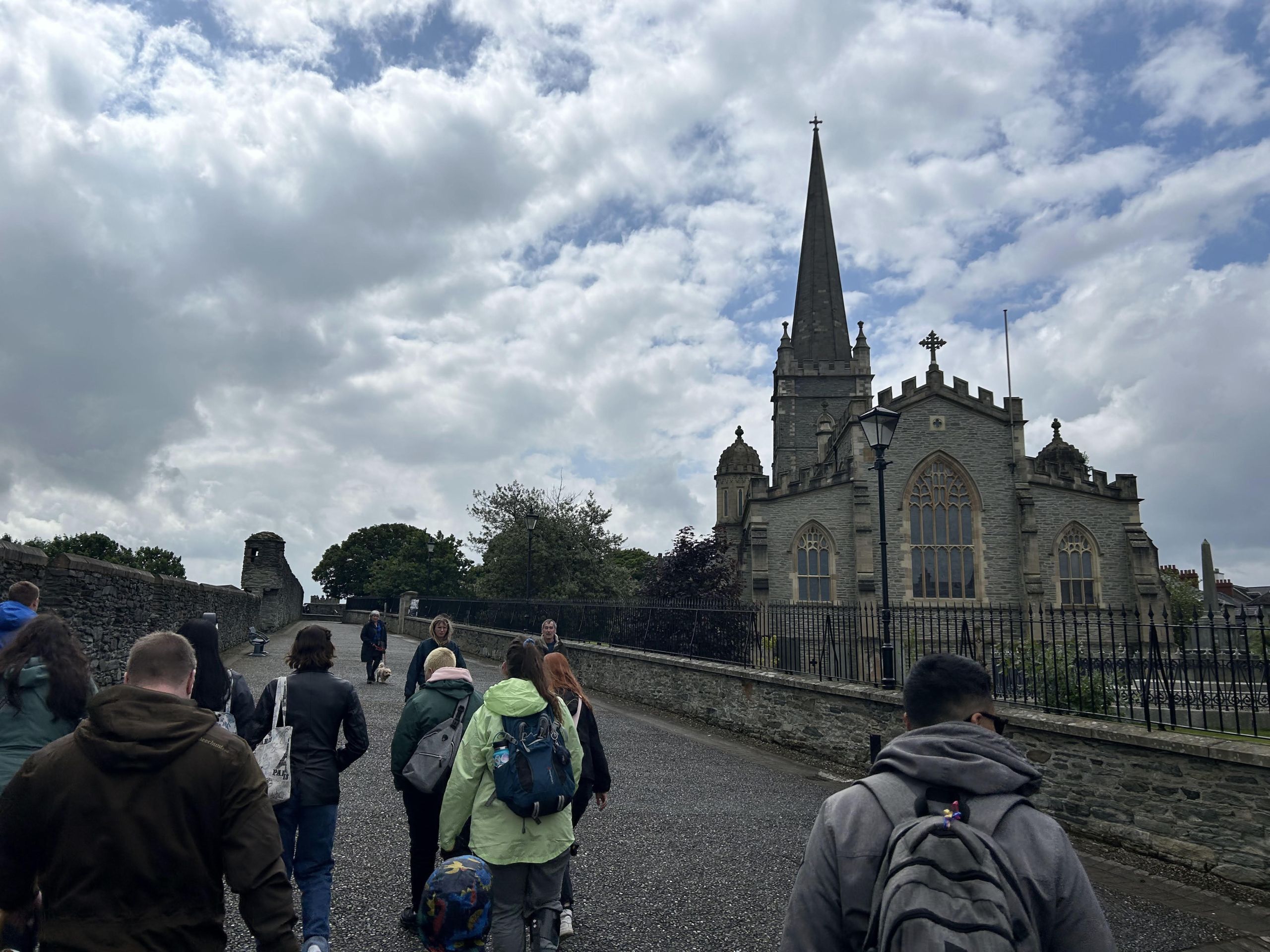
Our tour guide noted that this cathedral was reinforced to be able to hold cannons on its roof. Photo by Brenton Pham.
We saw murals and memorials depicting past IRA members (overwhelmingly Catholic) and Loyalists (overwhelmingly Protestant) alike, bullet holes in the sides of buildings, cannons, and newer murals with messages of solidarity with Palestine.
One mural that stood out to me simply read “Free Derry,” referring to the IRA’s desire to separate from the UK.
Just over the wall was another mural that read “We are under siege,” created by Loyalists in Derry who feel connected with the UK, but are surrounded by residents who feel a closer connection to the Republic of Ireland.
The contrast of these two messages was a stark and a brutal reminder that the end of the Troubles did not change long-held ideologies and beliefs.
The Bloody Sunday memorial, which remembered the 13 people, mostly youth, who were shot during a peaceful protest against British occupation, was one of the most powerful and emotional monuments we visited, especially since we had studied Seamus Heaney’s poem “Casualty” about this event and its repercussions for Derry, Northern Ireland, and Heaney’s own family and community.
Derry/Londonderry is so rich with history and conflict, yet in the decades since the Good Friday Agreement that ended the Troubles, they have been able to rebuild their city. The mural depicting the characters of the comedy show “Derry Girls” shows how the people of Derry have used stories as a way to heal.
We also had a bit of time to explore the city and the local shops. We practically bought one local store out of their colorful sheep souvenirs, as you can see if you zoom into this picture.
Though there is still a lot of work to be done, Derry is a message to the world that peace is possible.
–Lydia Esh
